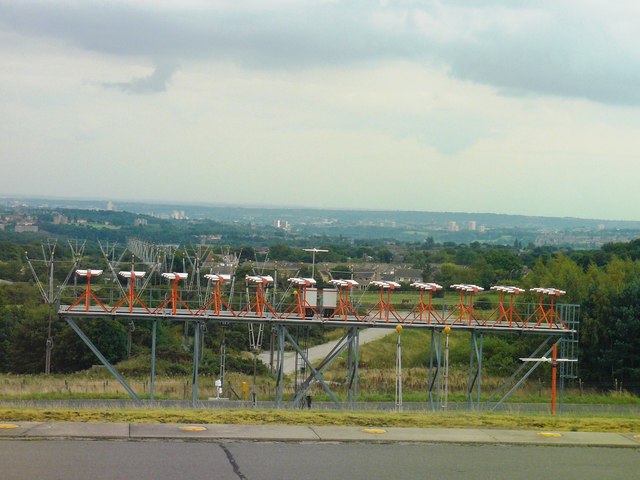

The notice recommended that pilots review the guidance contained in the Aeronautical Information Manual (AIM) and be “continually aware of the conditions under which critical area protections are imposed and whether or not the ILS fluctuations are likely caused by movement through the ILS critical area or an actual equipment malfunction.” Partial Protection “This well-known phenomenon may occur when aircraft or vehicles are moving through the ILS localizer and/or glideslope critical areas and is due to interference with the ILS signals,” the notice said, adding that in several of the reported incidents, pilots were conducting coupled approaches, and the autopilots tracked the distorted ILS signals, causing excessive pitch and roll excursions.

The notice said that there had been several recent reports by pilots and air traffic controllers about fluctuations of glideslope and/or localizer indications in aircraft on ILS approaches. Federal Aviation Administration (FAA) in April to issue a notice “to remind operators of the potential for erroneous glideslope and/or localizer indications caused by movement of aircraft or equipment through ILS critical areas.” 2 Tower personnel told the crew that, because of the weather conditions - 2 1/2 mi (4,000 m) visibility in snow and a 1,500-ft overcast ceiling - they were not required to protect the ILS critical area. The anomaly likely was caused by disruption of the glideslope signal by a large cargo aircraft holding for takeoff on Runway 28. “While leveling, I saw the glideslope indicator go back to the correct indication of full-up,” the pilot said. The airplane pitched nose-down and descended 100 ft before the pilot flying disengaged the autopilot and hand flew the airplane back to the appropriate altitude. They had established their large air carrier aircraft on the localizer during a coupled instrument landing system (ILS) approach to Chicago O’Hare International Airport’s Runway 28 and were awaiting glideslope interception when their glideslope course deviation indicators (CDIs) abruptly moved from the full-up position to full-down. Park Air Systems.The flight crew was in for a surprise. I, 3.1.3.3.1, International Civil Aviation Organization. The Wireless Engineer and Experimental Wireless, VI.Īnnex 10 (2006) Aeronautical Telecommunications. (1929) Note on the Apparent Demodulation of a Weak Station by a Stronger One. Thales ILS-LOC 411-Technical MANUAL (2000) Antenna Systems. Normarc 7220B Instruction Manual (2012) 24137-015, Park Air Systems. Normarc 7220A Instruction Manual (2012) 24136-015, Park Air Systems. Normarc 7216C Instruction Manual (2012) 71507-01, Park Air Systems. Normarc 7216A Instruction Manual (2012) 24797-013, Park Air Systems. Normarc 7212C Instruction Manual (2012) 70375-012, Park Air Systems. Normarc 7212A Instruction Manual (2012) 23746-018, Park Air Systems. Normarc 3526 Instruction Manual (2011) 21453-32, Park Air Systems. Normarc 3524 Instruction Manual (2005) 21451-75, Park Air Systems. Normarc 3523B Instruction Manual (2011) 21450-39, Park Air Systems. (2003) The Instrument Landing System: Replace It, or Repair It? The Journal of Navigation, 56, 411- 427.

The model could provide valuable theoretical basis for performance evaluation and maintenance of the ILS, and meanwhile, provide reference for the further analysis of localizer beacon. The simulation results showed that the model met the requirement of theory of localizer beacon, and the gap between two models was so evident, which resulted from the broken geometric symmetry in NF area. At the environment of Antenna Fault as well as Antenna Distribution Unit (ADU) phase shifter simulation, the characteristics of near-field and far-field were also compared. The three-dimensional mathematical model of localizer beacon was designed, and the signals at both near-field and far-field were analyzed qualitatively. From the actual perspective of working principle of localizer beacon subsystem of Instrument Landing System (ILS), consideration of the distance information from localizer antenna to field monitor antenna and wide aperture effect of localizer antenna, broke through the limitation of signals synthesized only far-field (FF), established the near-field (NF) model.


 0 kommentar(er)
0 kommentar(er)
